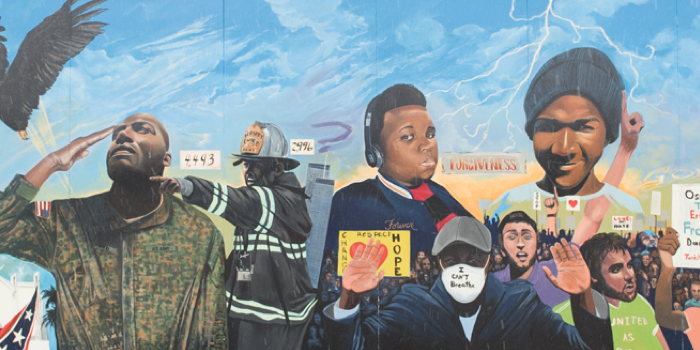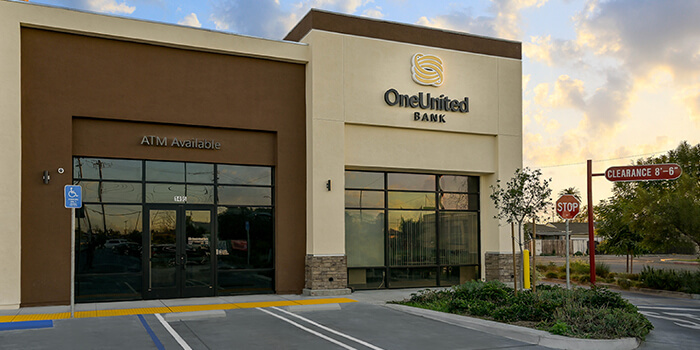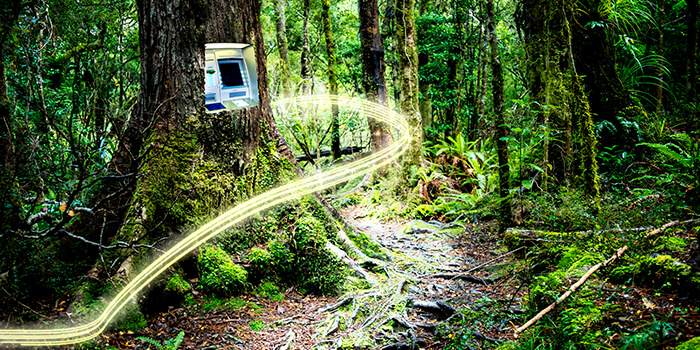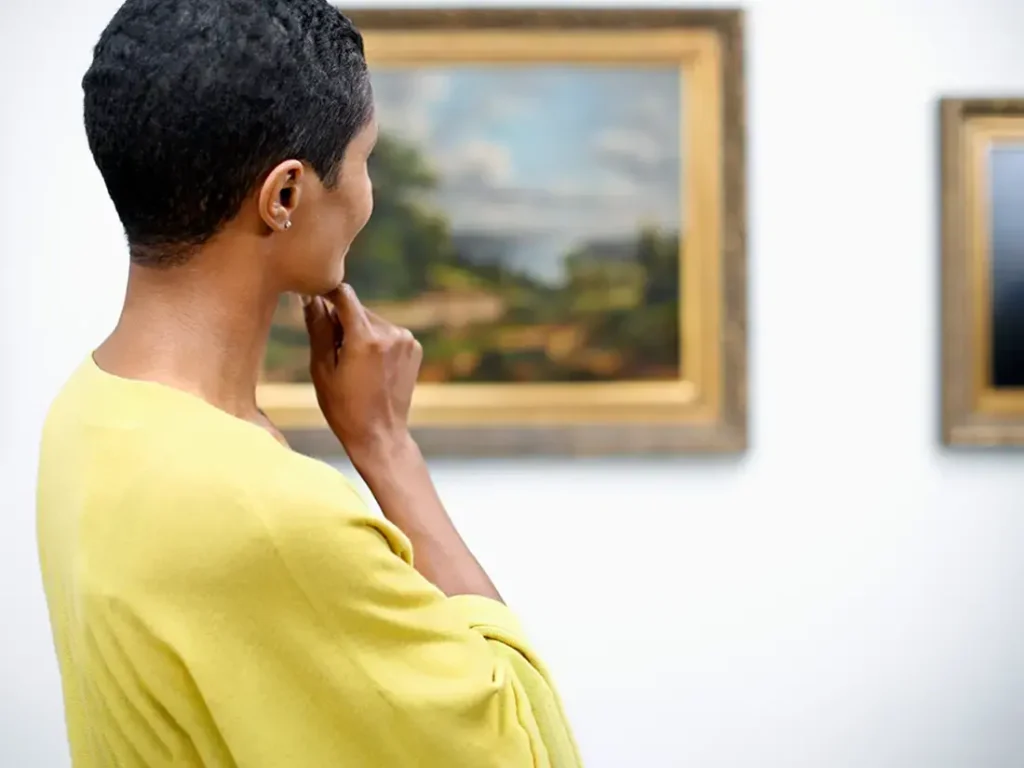Summary
The article "A Walk Through History: 10 Museums and Historical Landmarks" highlights the importance of Black history through ten key sites, including museums and historic landmarks across the U.S. These places, like the National Museum of African American History in Washington, D.C., and the Legacy Museum in Alabama, offer insights into African American history from slavery to modern times. The article emphasizes the significance of these sites in understanding and honoring Black heritage, especially during Black History Month.
By physically engaging with our past, we prevent the denial of Black history. This Black History Month, we encourage everyone to immerse themselves in national monuments and museums dedicated to telling the story of our resilience and resolve.
Our movements through time holds great power. We’ve refused to stand still and sit in silence, and we continue to challenge narratives and take up space.
In several ways, our physical coordination changes our reality:
- In community organizing, we combat forces developed to dilute our unity.
- In voting, we insist on an update to the promise of “equality.”
- In starting businesses, we rebuild the wealth of Black Wall Street.
By learning about our history, we honor our ancestors. Let’s explore key historic sites and museums across the nation that link us to our past and light up our future.
Our BHM Museums and Historical Landmarks
1. National Museum of African American History and Culture
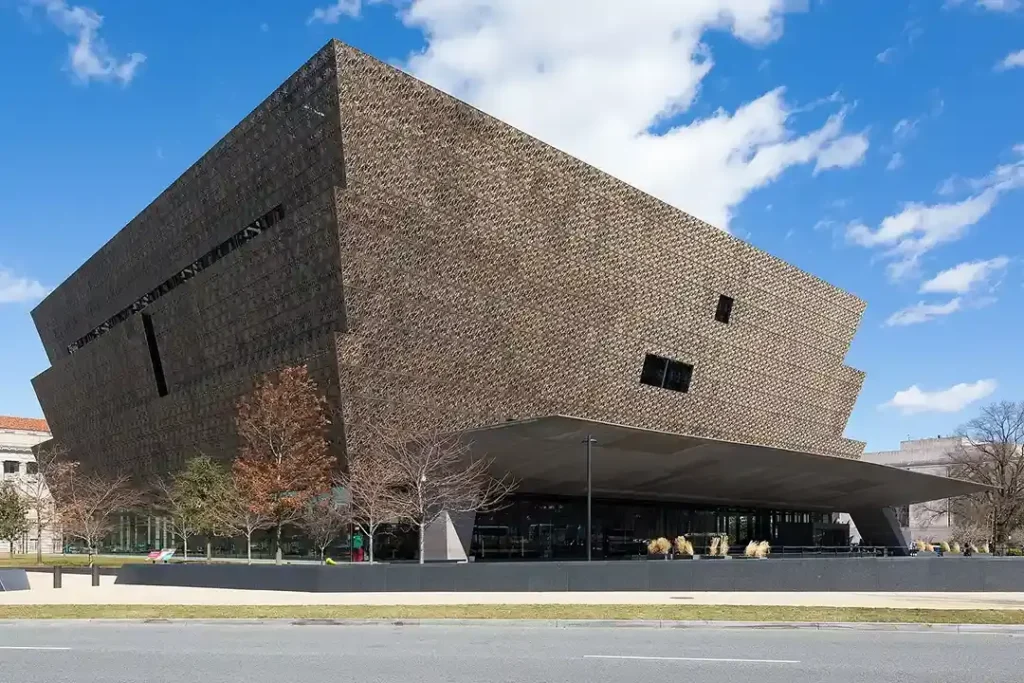
“File:National Museum of African American History and Culture in February 2020.jpg.” Wikimedia Commons, 13 Dec. 2022, commons.wikimedia.org/w/index.php?title=File:National_Museum_of_African_American_History_and_Culture_in_February_2020.jpg&oldid=714734018. Accessed 23 Jan. 2024.
Location: Washington, D.C.
NMAAHC chronicles our experience from slavery to the present day, including artifacts, interactive exhibits, and cultural celebrations. Its architectural design is inspired by the three-tiered crowns used in Yoruban art from West Africa and mirrors elements from across The Diaspora. A work of art itself, the NMAAHC reflects resilience and spirituality.
2. The Legacy Museum – Montgomery, Alabama
Location: Montgomery, Alabama
An initiative for the Equal Justice Initiative (EJI), a non-profit organization dedicated to challenging racial and economic injustice, The Legacy Museum confronts the history of racial inequity and is situated on the site of a former slave warehouse. The museum is located in Montgomery, a historic city for civil rights protests like the Montgomery Bus Boycott. It invites visitors to explore the connections between slavery, segregation, and contemporary issues.
3. Charles H. Wright Museum of African American History
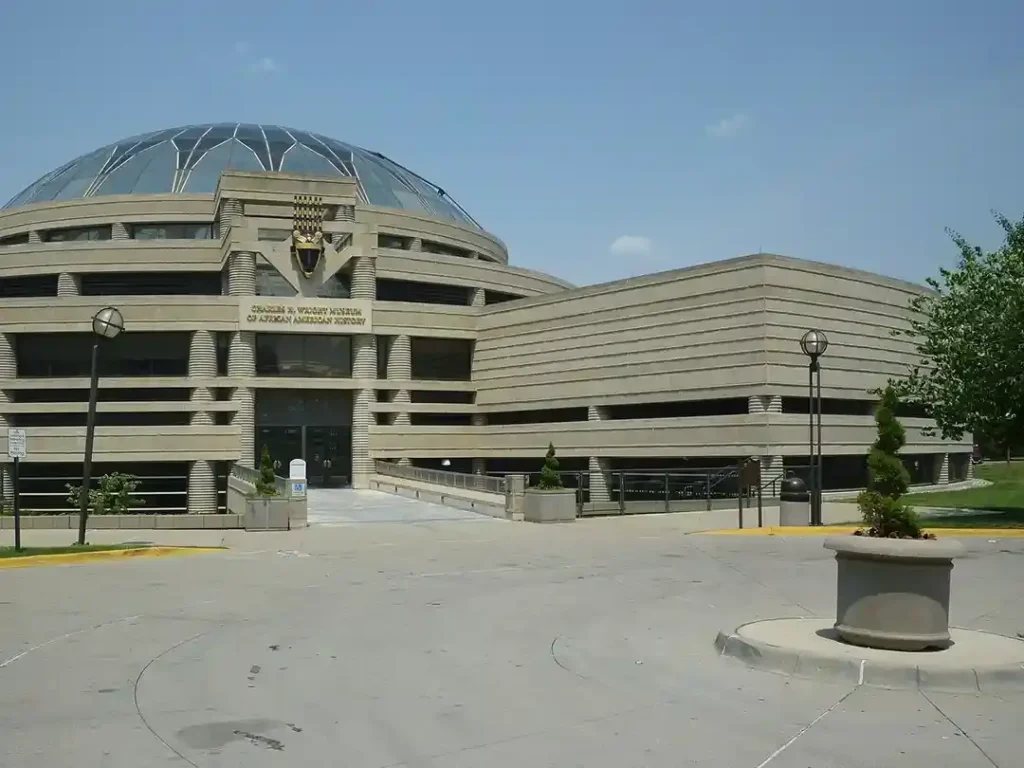
“File:Charles Wright African-American Museum.jpg.” Wikimedia Commons, 4 Oct. 2020, 17:01 UTC, https://commons.wikimedia.org/wiki/File:Charles_Wright_African-American_Museum.jpg. Accessed 23 Jan. 2024.
Location: Detroit, Michigan
Home to over 35,000 artifacts, this museum holds the crown as the largest African American museum worldwide. The Wright Museum is a critical addition to Detroit, cementing the city as an African American cultural hub. The museum uses multimedia presentations, interactive exhibits, and immersive displays to make history come to life for visitors. Through exhibitions, lectures, and workshops, it provides practical means for continued and collaborative learning about African American contributions.
4. Underground Railroad Freedom Center
Location: Cincinnati, Ohio
The Underground Railroad Freedom Center is located on the bank of the Ohio River, a historical crossing point for slaves seeking freedom. It is part of the National Underground Railroad Network to Freedom, a program that identifies and promotes locations associated with the Underground Railroad. The museum offers immersive exhibits, highlighting the courageous individuals who risked their lives to help slaves escape to freedom. Through these activations, visitors gain insights into the abolitionist movement.
5. Selma Interpretive Center
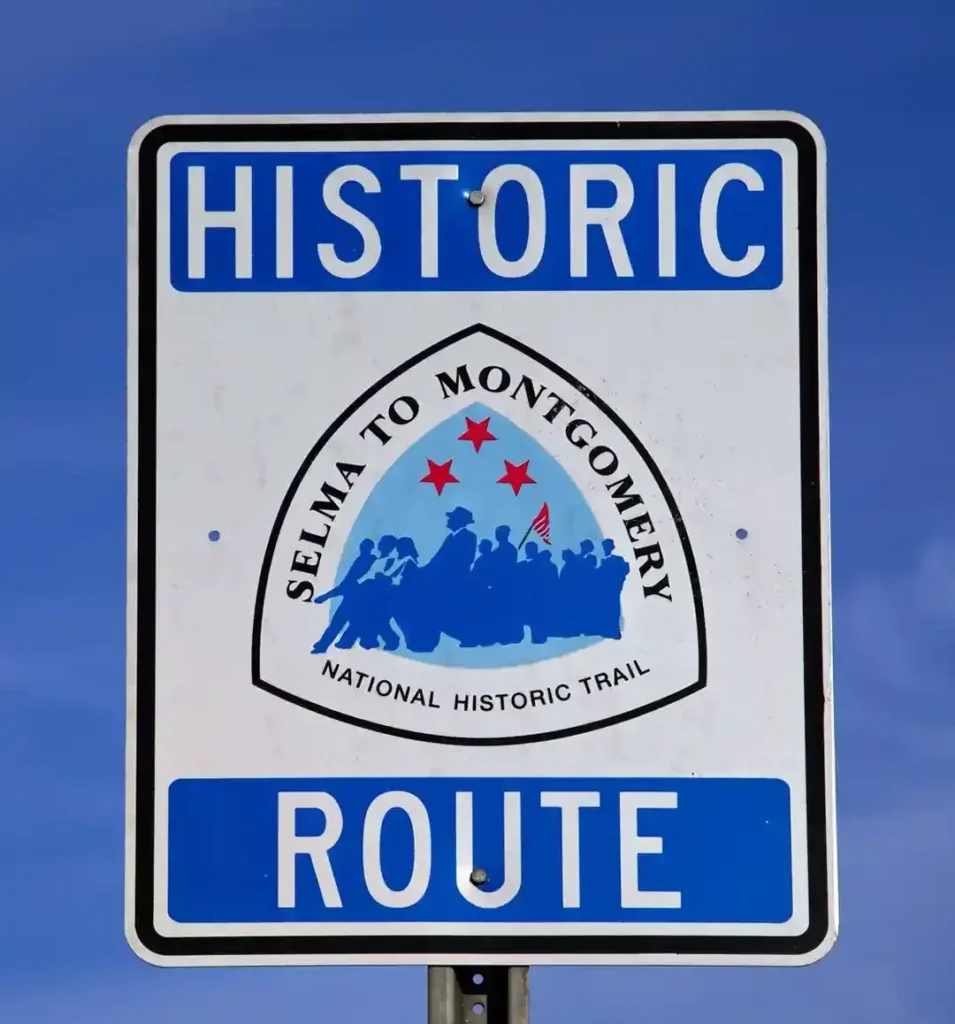
File:45th Anniversary of the Civil Rights March from Selma, Alabama to Montgomery, Alabama LCCN2010637779.tif.” Wikimedia Commons, 29 May 2023, 14:35 UTC, https://commons.wikimedia.org/wiki/File:45th_Anniversary_of_the_Civil_Rights_March_from_Selma,_Alabama_to_Montgomery,_Alabama_LCCN2010637779.tif. Accessed 23 Jan. 2024, 18:16.
Location: Selma, Alabama
Selma Interpretive Center is located near the Edmund Pettus Bridge, the site of the famed “Bloody Sunday” confrontation between civil rights marchers and law enforcement in 1965. This clash served as a turning point in the push for the Voting Rights Act, compelling the American public. The center exhibits a range of artifacts, photographs, and multimedia presentations that chronicle the history of the marches and the broader Civil Rights Movement.
6. Tuskegee Airmen National Historic Site
Location: Tuskegee, Alabama
A quintessential example of breaking stereotypes, the Tuskegee Airmen became known for their dedication to the country and were sent on missions to Europe and North Africa. As the first African American flying unit in the U.S. military, their valor and success proved quintessential to desegregation in the military.
The historic site commemorates these military aviators who served in the United States Army Air Forces during World War II and paved the way for integration into the armed forces. Visitors to this training facility can explore the flight line and hangar, explore guided tours, and interact with exhibits where the airmen received their training.
7. Martin Luther King Jr. National Historical Park
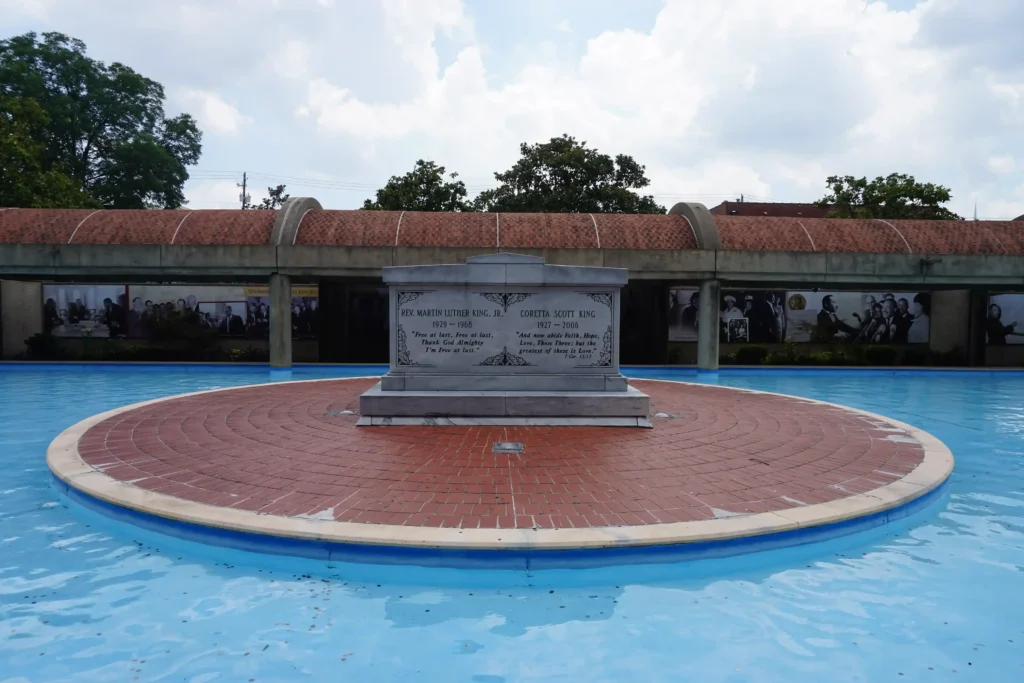
“File:Martin Luther King Jr. National Historic Site August 2016 24 (The King Center – Dr. and Mrs. King’s Tomb).jpg.” Wikimedia Commons, 8 Nov. 2021, 08:00 UTC, https://commons.wikimedia.org/wiki/File:Martin_Luther_King_Jr._National_Historic_Site_August_2016_24_(The_King_Center_-_Dr._and_Mrs._King%27s_Tomb).jpg. Accessed 23 Jan. 2024, 18:17.
Location: Atlanta, Georgia
Situated at the birthplace of Dr. Martin Luther King Jr., visitors are allowed to explore his home and the church, Ebenezer Baptist Church, where many of his influential sermons were given. Across from the park stands The King Center, a living memorial created by Coretta Scott King, Dr. King’s widow, which holds both of their tombs. The Sweet Auburn Historic District, which hosts the park, was once regarded by Fortune Magazine in 1956 as “the richest Negro street in the world”— a term coined by civil rights leader, John Wesley Dobbs.
From his beginning to his end, the Martin Luther King Jr. National Historical Park captures the legacy of one of the greatest civil rights champions and the rich influence of the surrounding community.
8. Beale Street Historic District
Location: Memphis, Tennesse
Home of legendary jazz clubs, the Beale Street Historic District also served as the early site of many historic Black-owned businesses. Jazz legends like Louis Armstrong, Muddy Waters, and B.B. King swept the city into the history books as they performed across the district’s establishments. Now deemed a National Historic Landmark by Congress, the three block district is part of the U.S. Civil Rights Trail, an official collection of churches, courthouses, schools, museums, and other landmarks across 15 states that played a pivotal role in advancing social justice in the 1950s and 1960s.
9. Whitney Plantation
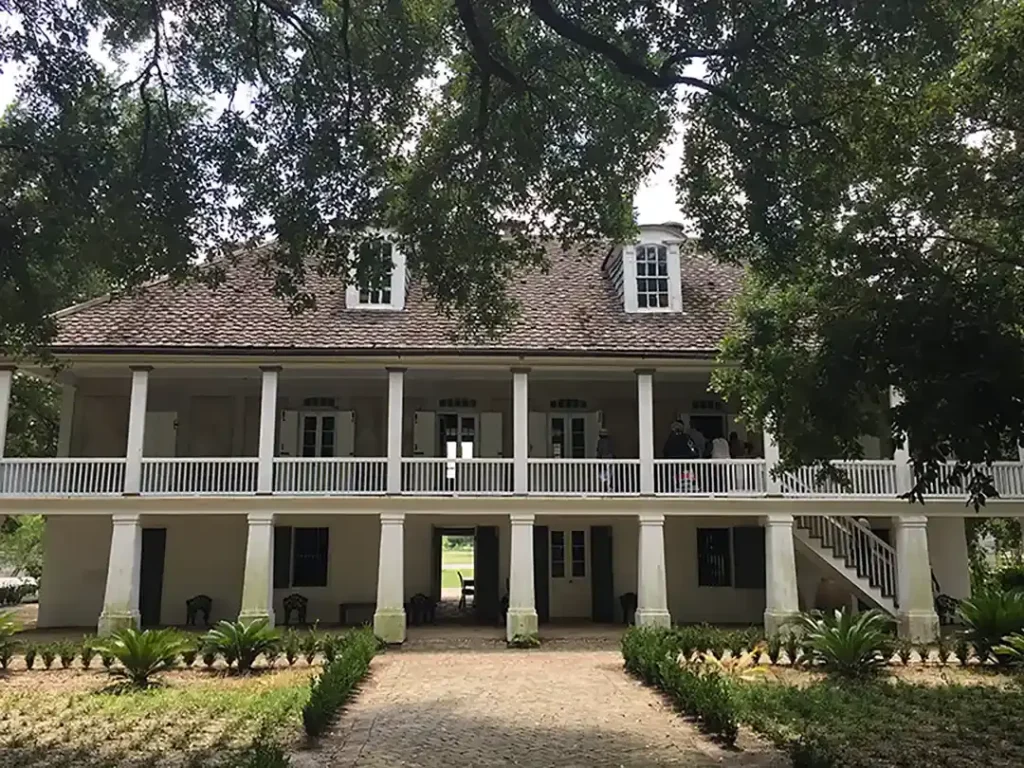
“File:The Big House – Whitney Plantation Historic District – 2016.jpg.” Wikimedia Commons, 31 Aug. 2022, 23:47 UTC, https://commons.wikimedia.org/w/index.php?title=File:The_Big_House_-_Whitney_Plantation_Historic_District_-_2016.jpg&oldid=686066562. Accessed 23 Jan. 2024, 18:19.
Location: Wallace, Louisiana
Honest and sharp in its unfiltered portrayal of the brutal realities of slavery in the American South, the Whitney Plantation serves as a symbol of reclamation. On the grounds of the former large-scale sugar plantation, the Slavery Memorial includes the “Wall of Honor,” listing the names of individuals who were enslaved on the plantation.
A purposeful, stark contrast can be seen between the accessible sites on the grounds, from the slave quarters to the mansion. Through guided tours, visitors experience a different view from the traditionally glorified depictions of plantations.
10. The Bridget “Biddy” Mason Monument
Location: Los Angeles, California
Located on Biddy Mason Park, the Bridget “Biddy” Mason Monument pays homage to Bridget “Biddy” Mason, a prominent trailblazer in the history of Los Angeles. In 1856, California became a free state. Biddy and her three daughters petitioned for their freedom based on the state’s anti-slavery laws and won their lawsuit, gaining freedom.
Biddy became a successful entrepreneur and amassed a considerable fortune. Afterward, she went on to support charitable causes through philanthropy. The 81-foot long, visually stunning memorial features a timeline explaining Mason’s role in Los Angeles’ Black history. Her journey from slavery to entrepreneurship and philanthropy is a testimony to resilience and purpose.
As we unpack the complexities of our history, these museums and historic sites call on us to take up space, to claim our power. In their physical spaces, stories come alive, legacy lives on, and inspiration is abundant.
Let’s seize this Black History Month as an opportunity to learn, reflect, and act. We encourage everyone to visit these spaces, stand in history, and continue to make #BlackHistory.





